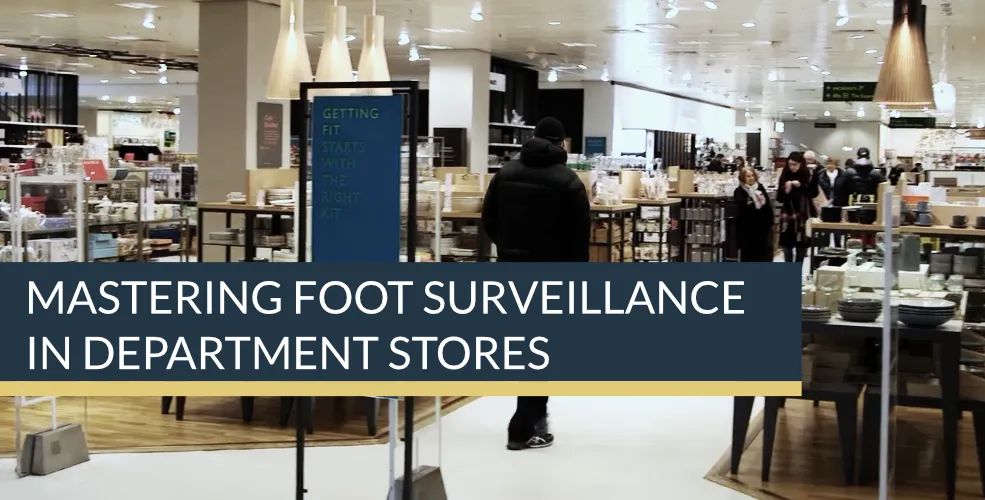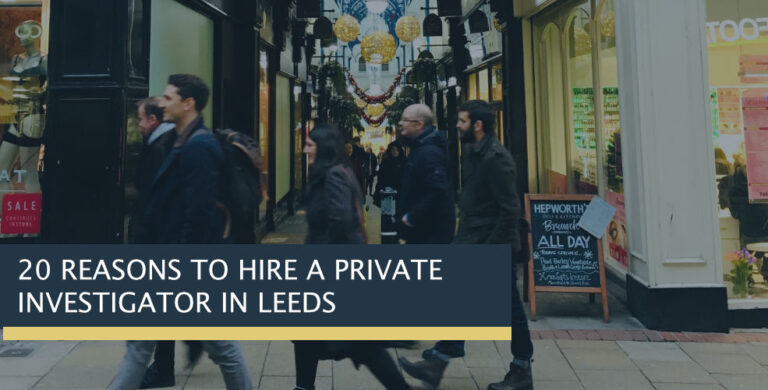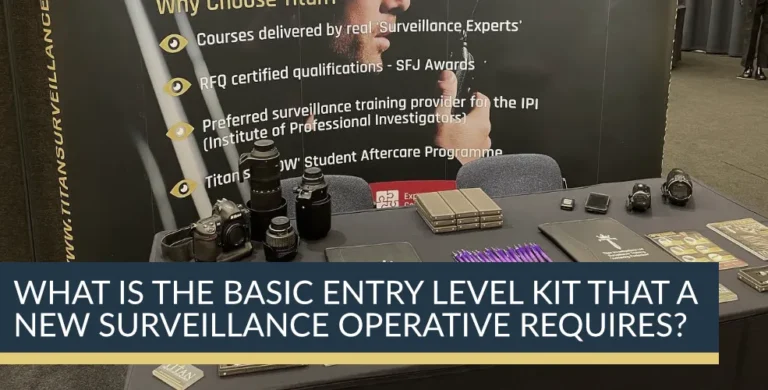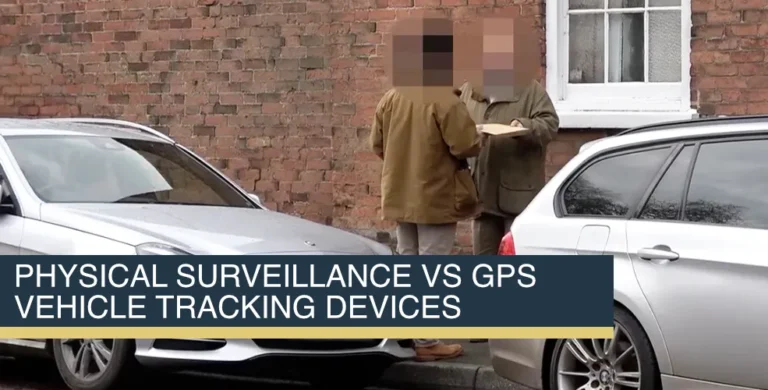Mastering Foot Surveillance in Department Stores
Dealing with foot surveillance in department stores
Foot surveillance in department stores can be an intricate and demanding task for even the most seasoned investigators. These retail environments are bustling hubs of activity, filled with complex layouts, security measures, and constant foot traffic—all factors that can complicate operations. Given these challenges, it is essential that surveillance teams adopt a strategic mindset to successfully conduct operations while maintaining discretion. In this expanded guide, we will delve deeper into the intricacies of conducting foot surveillance in department stores, outlining key strategies that ensure both operational success and personal safety.
The Unique Challenges of Department Stores
Surveillance within department stores presents a set of challenges unlike those in any other environment. These expansive retail spaces are designed to maximise customer convenience and security, which inadvertently creates obstacles for surveillance operations. Whether you’re tracking a subject for an investigation, loss prevention, or any other purpose, understanding these challenges is paramount.
- Multiple Exits: One of the most significant challenges in department store surveillance is the sheer number of exits. Larger stores may have separate exits on different floors, and multiple access points to the street, car parks, or adjoining shopping centres. The ease with which a subject can disappear from view means that the surveillance team must plan meticulously to cover all potential escape routes.
- Complex Layouts: Department stores are typically arranged across multiple floors, each containing departments that range from fashion and beauty to electronics and home goods. Escalators, staircases, and lifts provide various routes for a subject to change location quickly, which makes it crucial for the team to adapt their positions in real time. Failing to understand the store’s layout beforehand can easily lead to a loss of contact with the subject.
- Security Staff: Retail security staff, both overt and covert, patrol department stores looking for suspicious behaviour such as shoplifting, loitering, or unusual movement patterns. A surveillance team must be particularly cautious not to appear conspicuous, as heightened attention from security personnel can compromise the operation. Investigators should avoid appearing lost or out of place, as these behaviours are red flags to well-trained security teams.
- Extensive CCTV Coverage: Department stores are often equipped with extensive CCTV networks, providing coverage of the shop floor, entrances, and exits. While CCTV cameras do not typically pose a direct threat to investigators, they can indirectly increase the risk of detection if security staff monitor unusual behaviour on the footage.
- Natural Behaviour Monitoring: Security teams are often highly trained in detecting unnatural behaviours that may indicate theft or suspicious activities. These behaviours include lingering in a particular area for too long, making repeated visits to the same section without a clear purpose, or looking overly cautious and alert. Investigators need to maintain natural movements and interactions to avoid raising suspicion.
Preparing for the Operation
Effective preparation is the cornerstone of any successful foot surveillance operation. Before entering the department store, the surveillance team must thoroughly plan and discuss their strategy, ensuring that all members are aware of their roles and responsibilities. A well-prepared team is far less likely to lose track of a subject or face unnecessary risks.
- Team Briefing: A comprehensive briefing is essential. The team leader should explain the store’s layout, possible obstacles, and the surveillance goals. Each team member must know their role, whether it’s tracking the subject, monitoring key exits, or covering the upper floors. The more detailed the briefing, the better the team will be able to coordinate their actions during the operation.
- Identifying the Subject: A key aspect of surveillance is ensuring that the subject is correctly identified at the beginning of the operation. This includes understanding their appearance, behaviour, and any distinguishing features. Once identified, a designated team member should maintain constant visual contact with the subject while relaying information to the rest of the team.
- Communication Tools: Effective communication between team members is crucial for maintaining the flow of information. Earpieces or other discreet communication tools allow for real-time updates, ensuring that all team members are aware of the subject’s movements without drawing attention to the surveillance operation.
Executing the Surveillance
Once inside the department store, executing the surveillance plan effectively requires vigilance, adaptability, and coordination. Each team member should remain aware of their surroundings while simultaneously tracking the subject’s movements and maintaining communication with the rest of the team.
- Entry Coordination: It’s advisable for the entire team to enter the store at the same time, allowing them to immediately take their positions. Each member should confirm their presence and location via the communication channel. This helps the team to establish coverage across different sections of the store from the very start of the operation.
- Positioning: To effectively cover all areas of the store, the team should split up and position themselves across different floors or sections. For example, one member might stay on the ground floor near the main entrance, another may monitor the first floor, and a third team member could cover the upper floors. This distribution ensures that the subject can be tracked regardless of which direction they move in.
- Maintaining Visual Contact: It is vital that the designated observer keeps the subject within sight at all times. While other team members may be tracking different parts of the store, the observer must continually relay updates to ensure that the team is aware of the subject’s movements.
- Adjusting to Movement: Surveillance in a department store requires a high level of adaptability. If the subject moves between floors or departments, team members must adjust their positions accordingly. The key is to anticipate the subject’s movements based on the layout of the store and their observed behaviour. For example, if the subject appears to be heading towards an escalator, a team member should be ready to cover the floor the subject is likely to move to next.
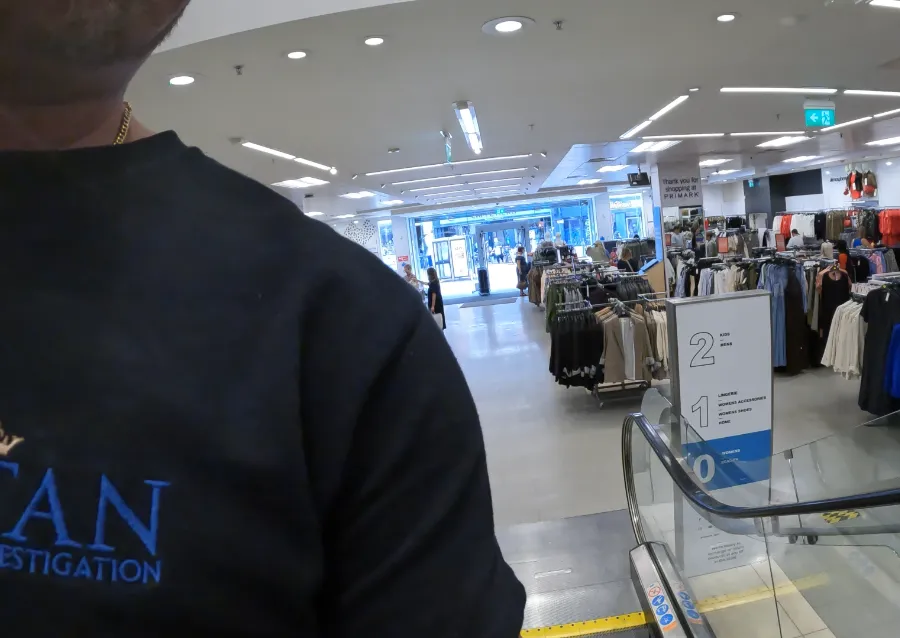
Utilising Store Features to Your Advantage
Department stores are filled with features that can be used to the surveillance team’s advantage. Learning to use the environment to remain undetected while keeping the subject in view is a vital skill.
- Strategic Meeting Points: Department stores often have cafés, seating areas, or restrooms located on higher floors. These areas can serve as discreet locations for team members to regroup, share information, or even swap positions without drawing attention.
- Natural Cover: The layout of department stores provides ample cover for surveillance. Displays, clothing racks, and shelving units offer excellent opportunities for investigators to remain out of sight while observing the subject. Moving between these areas in a natural and non-suspicious manner can be an effective way to stay hidden in plain sight.
- Understanding Store Layout: Familiarity with the store layout allows investigators to predict the subject’s movements and place themselves in advantageous positions. Knowing where key sections of the store are located, such as the escalators, exits, or even popular departments, enables the team to anticipate where the subject might go next.
Dealing with Security Personnel
Inevitably, investigators may encounter store security personnel during a surveillance operation. Knowing how to interact with them—or more importantly, how to avoid them—is crucial to maintaining cover and ensuring the operation is not compromised.
- Blending In: One of the best ways to avoid drawing attention from security personnel is to blend in with the general public. Investigators should dress appropriately for the store’s demographic, appearing to be ordinary shoppers. Acting natural and confident is often enough to deter any unwanted scrutiny.
- Confidence and Purpose: Confidence is key in surveillance operations. Moving through the store with purpose and appearing as though you have a specific goal in mind will help you avoid standing out. Conversely, acting indecisive or unsure can quickly attract the attention of security staff, who are trained to look for suspicious behaviour.
- Awareness of Security Measures: Keeping an eye on the store’s security presence is essential. Investigators should be aware of where security personnel are stationed and any patrol patterns they may follow. This allows the team to adjust their movements to stay out of sight and avoid unnecessary encounters.
Post-Operation Review
Once the operation is complete, conducting a thorough review is critical for future success. A well-structured debrief can highlight lessons learned, areas for improvement, and strategies that worked well.
- Team Debrief: Immediately after the operation, hold a debriefing session where team members can share their experiences. Discuss what went well and what challenges were faced. This feedback is invaluable for improving future surveillance efforts.
- Evaluating Strategies: Analyse the effectiveness of the strategies employed during the operation. Were the positions chosen effective? Did the team successfully avoid detection? Were there any missed opportunities for improvement?
- Documenting Findings: Finally, documenting the findings of the operation, including any challenges and how they were overcome, ensures that the team has a detailed record for future reference. These records help refine techniques and strategies for upcoming operations.
Conclusion
Foot surveillance in department stores is a complex and demanding task, requiring careful planning, coordination, and adaptability. The unique challenges posed by these bustling retail environments necessitate an in-depth understanding of the store layout, the ability to blend in with the general public, and the skill to maintain communication and visual contact without raising suspicion. By employing these strategies and continually refining their approach, surveillance teams can effectively navigate the complexities of department store operations, ultimately ensuring a successful outcome while minimising the risk of detection.
For more expert tips and insights on surveillance techniques, subscribe to our blog or follow us on social media for the latest updates.
Foot surveillance in department stores find out more
For further advice and information about Foot Surveillance techniques and Titan’s surveillance training courses, then please feel free to speak to one of our professional team at one of the offices nearest to you.
London Foot Surveillance Training – Call the Titan Investigations London Office 020 39046622
Birmingham Foot Surveillance Training – Call the Titan Investigations Birmingham Office 0121 7162442
Cambridge Foot Surveillance Training – Call the Titan Investigations Cambridge Office 01223 662022
Derby Foot Surveillance Training – Call the Titan Investigations Derby (Head Office) 01332 504256
Leeds Foot Surveillance Training – Call the Titan Investigations Leeds Office 0113 4574066
Leicester Foot Surveillance Training – Call the Titan Investigations Leicester Office 0116 2436520
Nottingham Foot Surveillance Training – Call the Titan Investigations Nottingham Office 0115 9646950
Manchester Foot Surveillance Training – Call the Titan Investigations Office 0161 3023008
Sheffield Foot Surveillance Training – Call the Titan Investigations Sheffield Office 0114 3499400
Truro Foot Surveillance Training – Call the Titan Investigations Truro Office 01872 888706
Alternatively, you can contact us directly using our fully confidential contact form at enquiries@titaninvestigations.co.uk or chat directly using our Live Chat facility and one of our surveillance training course team will get right back to you.

